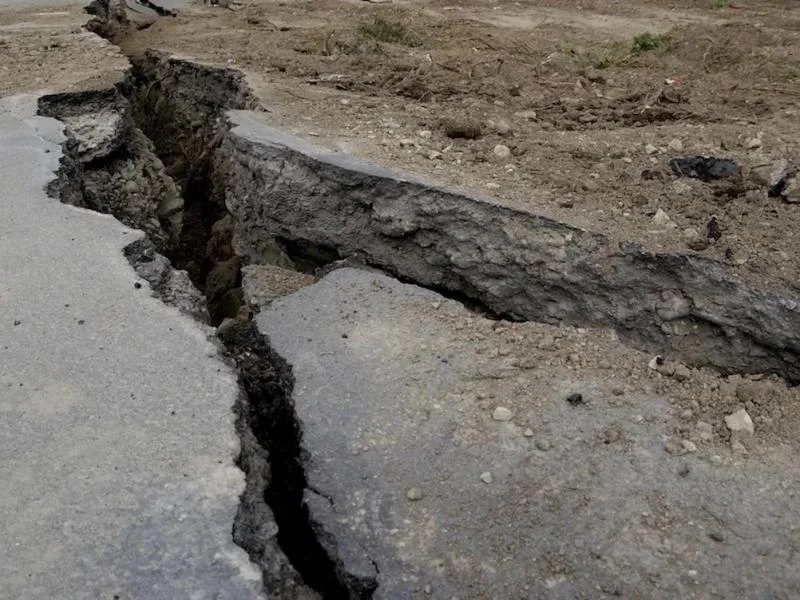Tremors and earthquakes are seismic events, but they are different in what causes them, how strong they are, and what they do to the surface of the Earth. Tremors are continuous, low-intensity vibrations in the ground caused by both natural and man-made events. They can be caused by the movement of fluids in the Earth’s crust, volcanic activity, or heavy machinery and traffic. Most tremors don’t cause much damage; if they are small, people might not even notice them. They may, however, be a sign that a volcano is about to erupt or that changes are happening below the surface.
Earthquakes, unlike tremors, can do a lot of damage to buildings, property, and people. Earthquakes, on the other hand, are sudden, fast shakings of the Earth’s surface that happen when energy stored in the crust of the Earth is released. This release usually occurs along fault lines, where tectonic plates meet and move against each other. Earthquakes can be too small to notice or so big that they cause much damage. The ground often breaks, landslides, tsunamis, or other dangerous things happen simultaneously.
In short, tremors are low-intensity, continuous vibrations of the ground that many different things can cause. On the other hand, earthquakes are sudden, high-intensity events that happen when energy is released along fault lines. Most tremors don’t do much damage, but earthquakes can be very destructive and have effects that last for a long time.
What are Tremors?
Tremors are continuous, low-intensity ground tremors caused by various natural and human-made processes. These can be caused by activities like volcanism, fluid movement inside the Earth’s crust, and even the operation of heavy machinery and vehicular traffic. Low-amplitude tremors are normally harmless and might pass unnoticed by humans. Nonetheless, they may act as early warning indicators for imminent volcanic eruptions or indicate subsurface changes requiring monitoring.
Understanding geological processes and potential hazards, as well as measuring the influence of human activities on the Earth’s crust, can be aided by monitoring tremors. Although tremors and earthquakes can be confused, their intensity and duration differ. Tremors typically have a lower magnitude and last longer than earthquakes, which are abrupt, quick, and frequently more damaging seismic events.
What are Earthquakes?
An earthquake is the abrupt, violent shaking of the Earth’s surface produced by the release of energy from the Earth’s crust. Often, this release happens at fault lines, where tectonic plates touch. When this stress exceeds the strength of the rocks, it is released in the form of seismic waves, causing an earthquake.
Earthquakes can range from unnoticeable to catastrophically destructive in intensity. Ground ruptures, landslides, tsunamis, and other hazardous occurrences frequently accompany them. A quake’s effects depend on its magnitude, depth, location, and geological features in the area.
Earthquakes can cause enormous destruction to infrastructure, property, and human lives. Understanding and monitoring earthquake activity facilitates the evaluation of possible risks, the development of early warning systems, and the implementation effective disaster management techniques to reduce loss and damage. To monitor and evaluate earthquakes, seismologists employ various tools and techniques, such as seismographs and the Richter scale.
Difference Between Tremors and Earthquakes
Earthquakes are the quick, rapid shaking of the Earth’s surface caused by the release of energy along fault lines. Tremors are constant, low-intensity ground vibrations brought on by natural or human-induced events; they are mostly harmless and can go unnoticed. They range in magnitude and can have devastating effects on buildings, roads, and people. The main distinctions between tremors and earthquakes are highlighted below.
Cause
Earthquakes occur when energy is released along fault lines as a result of tectonic plate movement, whereas a variety of natural or human-induced activities can trigger tremors.
Intensity
Earthquakes can range in strength from barely perceptible to catastrophic.
Duration
Earthquakes are sudden and typically short-lived, although tremors can last much longer.
Noticeability
Earthquakes tend to be more noticeable than tremors because of their greater amplitude.
Damage
Earthquakes can be devastating to buildings, roads, and people, while tremors are usually harmless.
Ground Motion
Earthquakes cause sudden, intense shaking, while tremors entail subtle, sustained vibrations.
Early Warning Signs
Tremors may precede volcanic eruptions, but earthquakes typically do not.
Associated Hazards
Earthquakes can generate landslides, tsunamis, and ground rupture, whereas tremors rarely cause extra problems.
Seismic Waves
Seismic waves can travel great distances when an earthquake occurs, yet tremors only travel short distances.
Frequency
In areas where there are active volcanoes or geothermal activity, tremors are much more common than earthquakes.
Monitoring
Earthquakes and tremors are tracked to comprehend seismic risk better and provide early warning systems for dangerous situations.
Human-induced Factors
Natural processes typically cause earthquakes, whereas tremors can be triggered by human activity like mining, construction, and traffic.
Geological Context
While earthquakes have long been related to fault lines and tectonic plate boundaries, tremors can occur anywhere on Earth.
Predictability
While earthquakes are always a bit of a wild card, tremors can sometimes be anticipated, as in the case of volcanic activity.
Disaster Management
In contrast to tremors, earthquakes typically call for all-out disaster management measures, including considerable preparation, reaction, and recovery.







